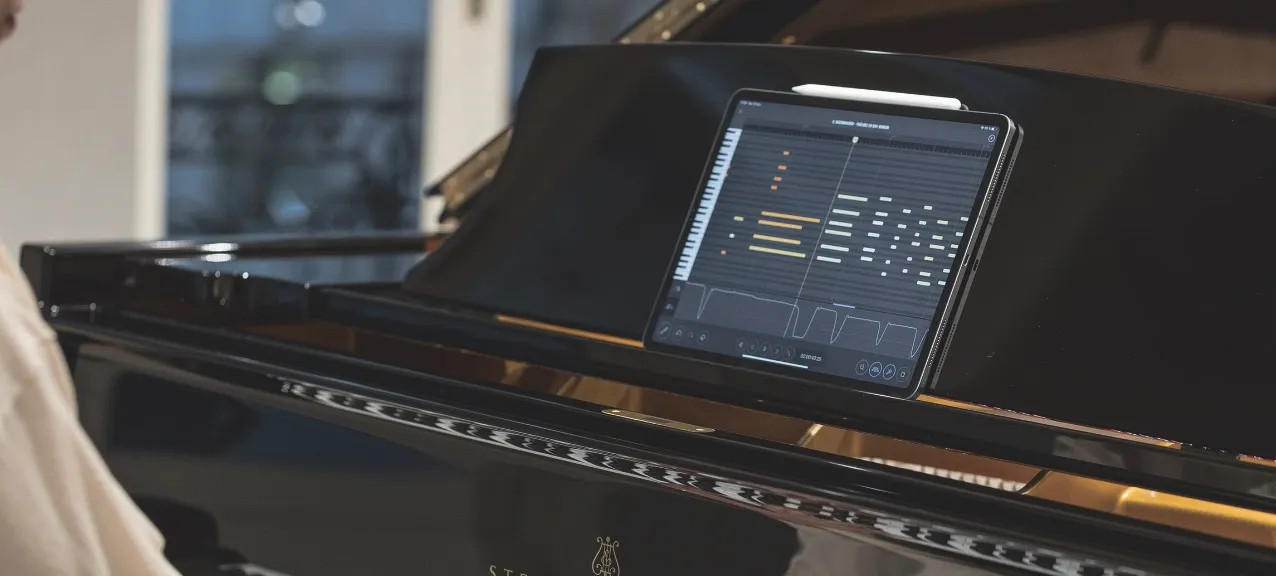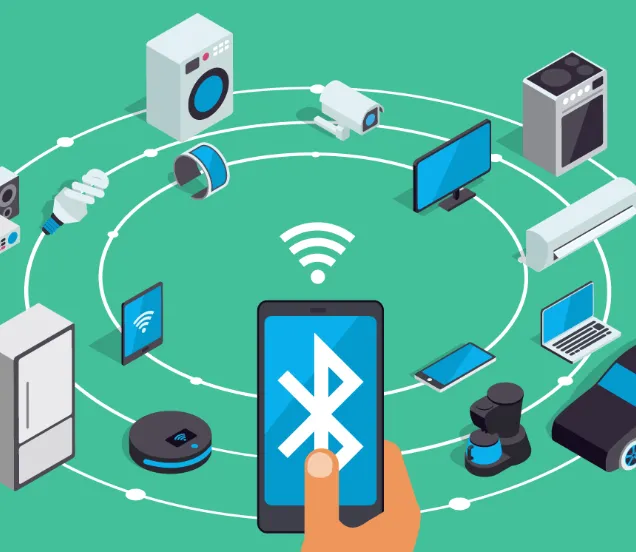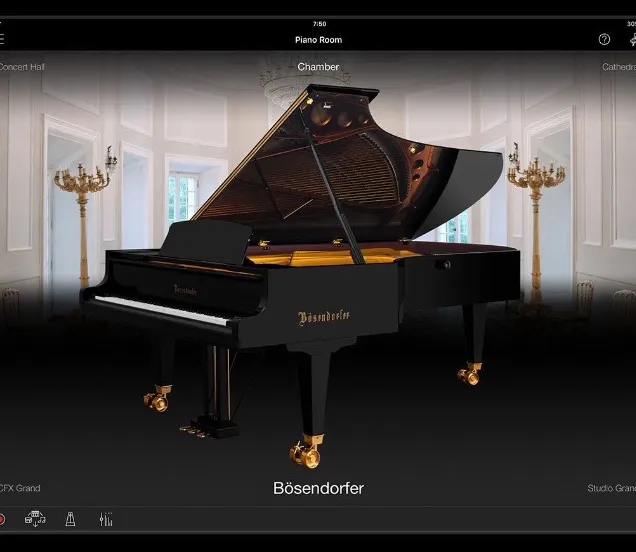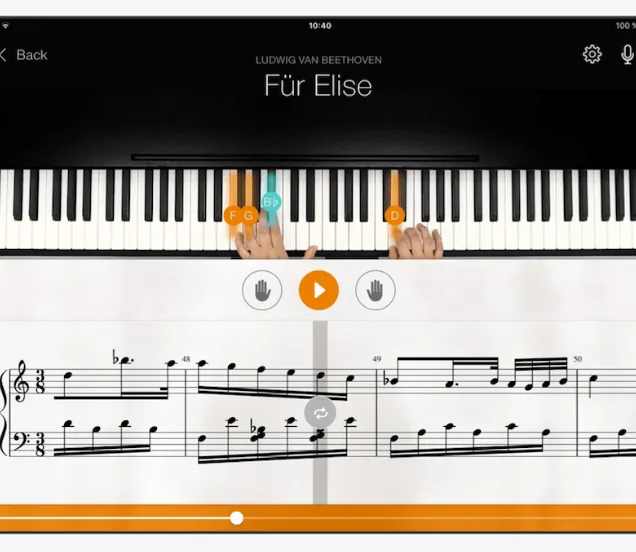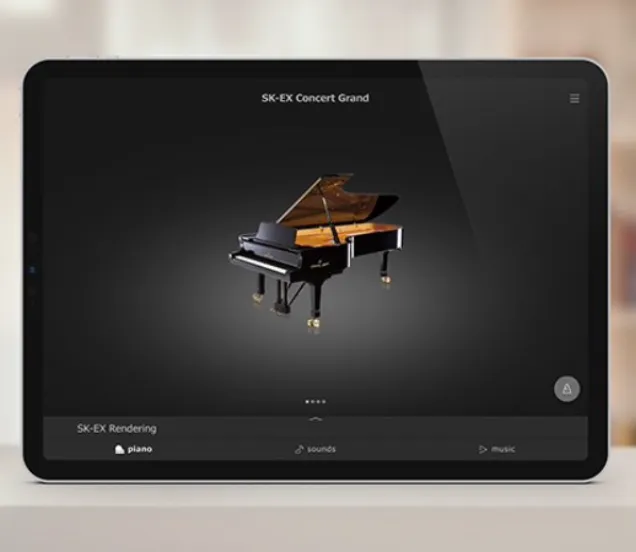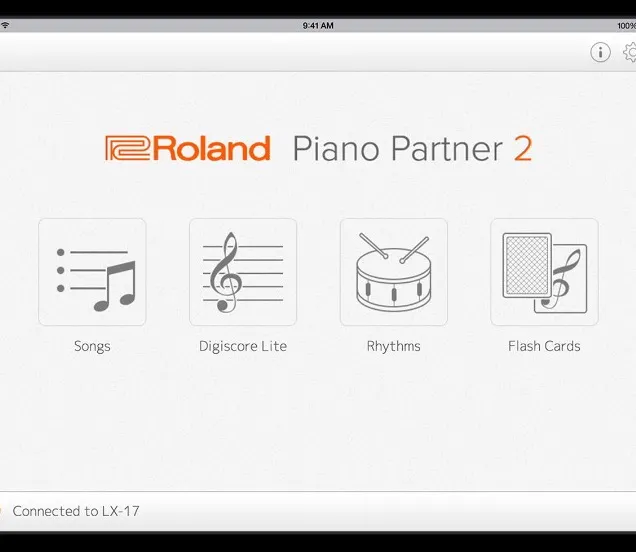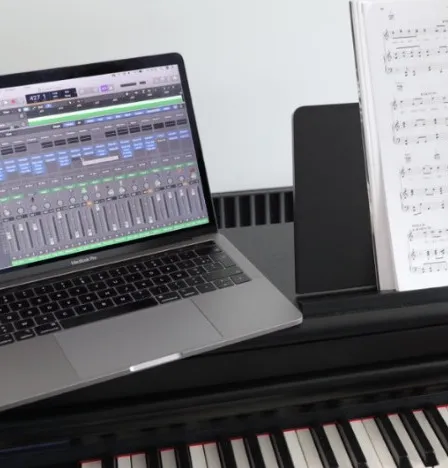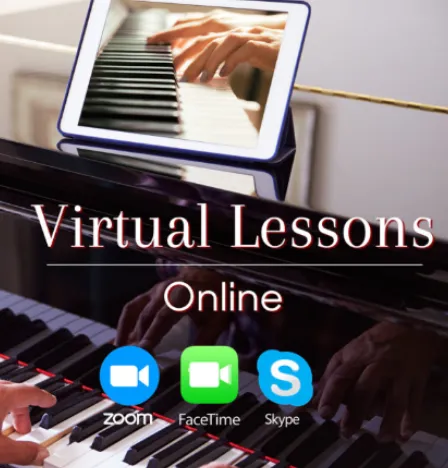This app offers you the possibility to convert the sound of your Yamaha instrument to, for example, a Yamaha CFX (concert grand piano) Bösendorfer, Upright etc. Now this is nothing new but the app then offers the possibility to place your instrument in different rooms which changes the acoustics considerably. You can even set the grand piano to a smaller position or close it completely in order to achieve a smaller sound.
If this doesn't go far enough, you can influence the characteristics of the different rooms or the instrument even further. For example, you can use Touch Curve to adjust the keyboard to your playing style. If you really want to go into depth, you can even use Unique Key Setting to adjust the characteristics of each individual key in order to achieve a completely unique playing experience.
When it comes to making music, the app also has a few nice features that contribute to the enjoyment of playing. The so-called Chord Tracker was already a feature of Yamaha but it is now built in as standard and the quality has also been considerably improved. This makes it very easy to upload your favourite songs and have them analysed, resulting in a fully written chord diagram. Want to play along but the tempo is too high? No problem, you can easily adjust it. Is the key a bit high to sing along? Simply transpose until you find the right pitch.
Another possibility within the same app is to play along with different music styles. Whether it's a Brazilian bossa nova or American blue grass, Smart Pianist offers it all and best of all, your combo will always adapt to your chosen chords. This way, playing together suddenly becomes very easy!
Pros: A beautifully finished and very comprehensive app with lots of different options and details.
Cons: An extensive app with almost too many different options.

